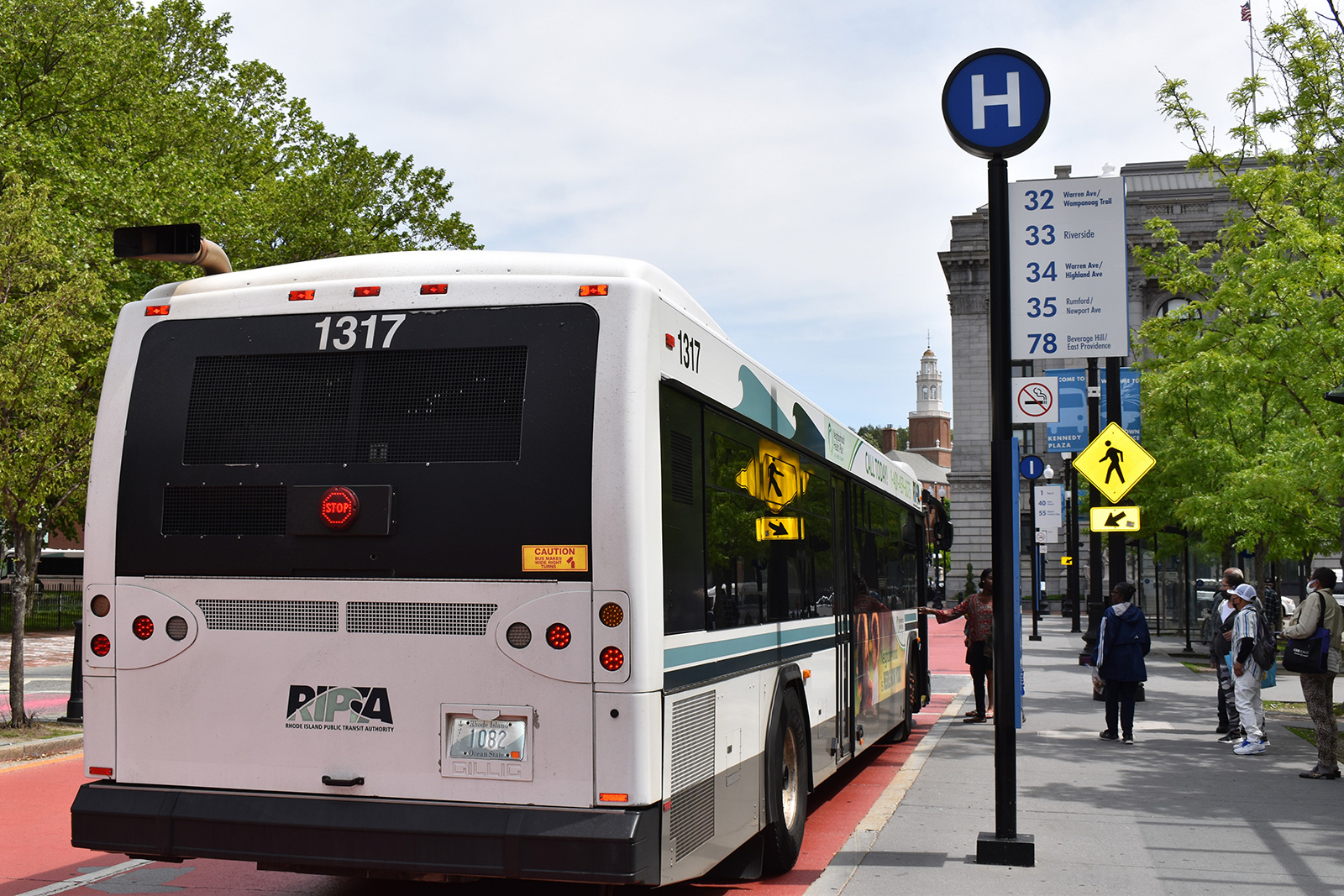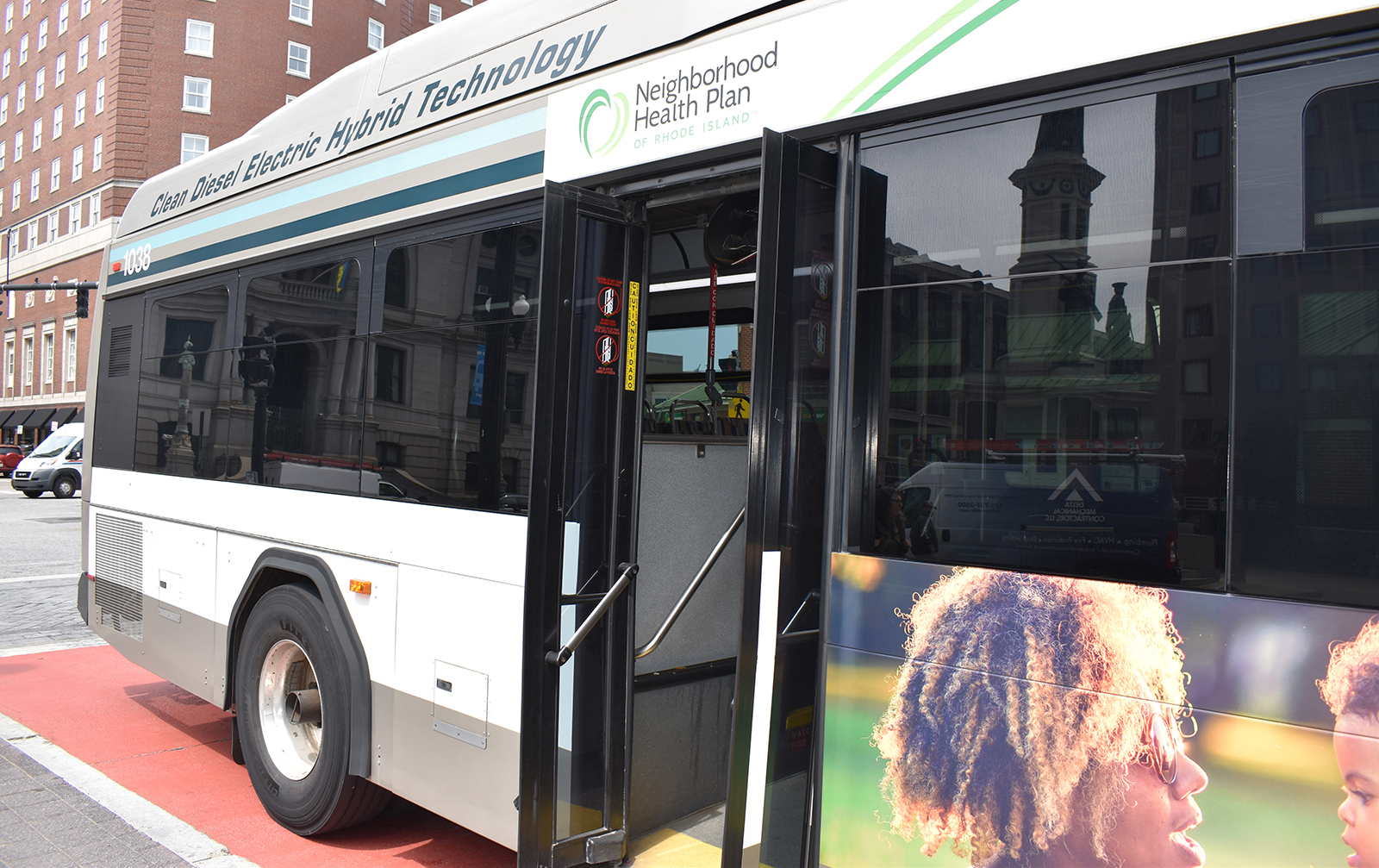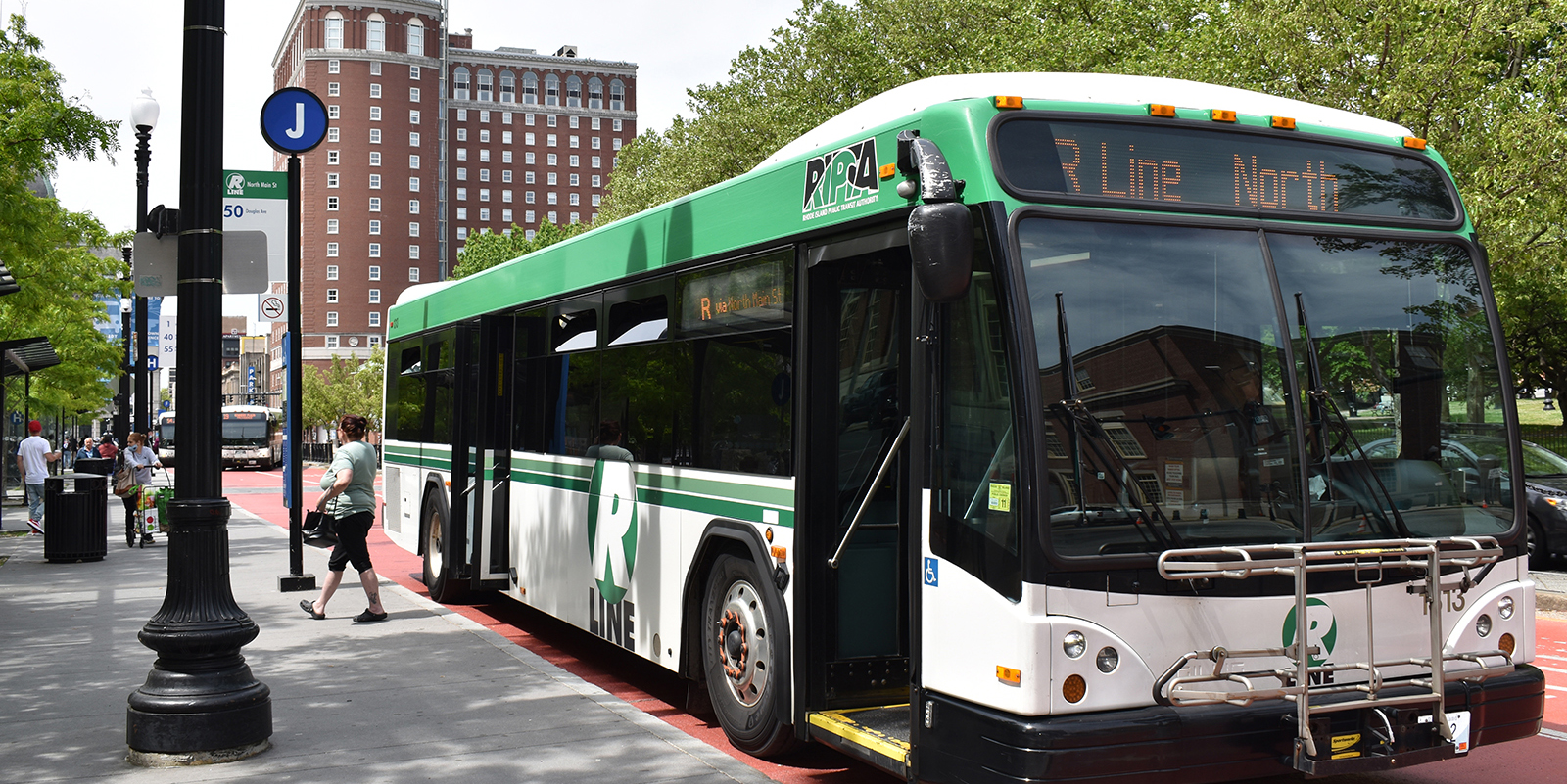Providence City Council Passes Resolution to Oppose South Water Street Bike Lane Removal
April 5, 2024
PROVIDENCE — The City Council passed a resolution Thursday night opposing the removal of the South Water Street bike lane after Mayor Brett Smiley announced earlier this week his intention to take the lanes away to add back a lane of vehicle traffic.
Smiley wants to remove the bike lanes as a part of a measure he said would help ease traffic caused by the Washington Bridge closure.
Before the lanes were installed in 2021, opposition to the project included Brown University, the Rhode Island School of Design, and some restaurants and businesses along the Providence River that were concerned that reducing vehicle travel to one lane to accommodate bikes would impact traffic.
Smiley’s plan would remove the bike lanes, add back a vehicle lane, and construct new bike lanes on the sidewalk at a cost estimated at $750,000.
Councilors and members of the public who spoke up opposing the lanes’ removal before the resolution vote cited that price tag along with safety, accessibility, and climate mitigation among their reasons for wanting to see the lanes remain.
Ward 3 City Council member Sue Anderbois called the cost an “obscene amount of money” that could be going to other needed projects like stop signs, speed humps, or working bathrooms at local public schools.
The sponsor of the resolution opposing the removal, Ward 1 council member John Goncalves said removing the bike lane would be a step backward and a “misuse” of funding.
“The South Water Street bike lanes represent more than just a strip of pavement designated for cyclists,” he said. “They symbolize our commitment to a greener, more sustainable, more equitable Providence.”
Ultimately, the council voted 10-0, passing the resolution, with two members abstaining.
Before starting the council meeting, those opposed to the bike lane’s removal packed the council’s hearing room and maxed out the public comment period.
Maurice Collins, owner of the Wild Colonial on South Water Street, spoke in favor of the lanes, which he said were good for business.
Collins described how the bike lane encouraged more people to walk down to this area of the neighborhood, especially during WaterFire festivals that had been a loss for the business prior to the lanes’ installation.
He said the lanes spurred “both quantitative and qualitative improvements in our business.”
“Instead of what’s best for people who want to leave our city as quickly as possible,” he added, “please encourage those of us who live here, and those who want to stay with us.”
Another speaker, Alex Diaz-Papkovich, spoke about how the area has become safer for him since the city put the bike lanes in place. It’s easier to cross South Water Street and safer to get to and from the grocery store, he said.
“We not only need to preserve the South Water Street bike lanes but to expand the city’s network,” he said.




The South Water St bike lane is, for all intents and purposes, unusable for cycling. I regularly use South Water St to bike from my residence in Smith Hill to the Washington Bridge Linear Park and points beyond.
After the dedicated bike lane was installed I started to consider alternate routes since the bike lane is generally impassable when events like the Providence Flea occur. Point in fact, cones with placards asking cyclists to dismount and walk their bikes through the bike path were placed on the bike path towards the end of last summer. On one occasion, seeing the placard, I opted to exit the bike path altogether and join vehicular traffic to travel south on South Water St since it was easy to keep up with the car traffic moving at 10 miles an hour.
As an avid cyclist, I certainly do appreciate efforts to install dedicated bike lanes in the city of Providence. But in this particular case, the end result is a total failure; a complete waste of taxpayer funds that does not meet the primary objective of providing a dedicated bike path for cyclists to use. And at this point, I would even go further to say that encouraging cyclists to enter the bike path at the Crawford St Bridge, the north end of the path, is a disaster waiting to happen.
Before the dedicated bike lane was installed, I would typically ride on the sidewalk on the left side of South Water St behind Hemenway’s opting to cross over to the right side of South Water St at Packett St since there are serious visibility issues with vehicular traffic coming over the Crawford street bridge at the start of the bike lane. With the dedicated bike lane and it’s posts, there’s really no other option but to cross at the Crawford bridge outlet. I wouldn’t recommend this route to any but the most experienced cyclists, who would in turn opt for another route anyway.
How much money did we spend installing a dedicated bike path that is typically overrun with pedestrians, coming from both the sidewalk and as passengers exiting park cars on the other side, which also has an extremely dangerous entry point on it’s north end? Having considered all these issues while writing this comment, this cyclist has decided to start taking his own advice and completely avoid South Water St altogether.
Could we please, in the future, think more carefully and mindfully, thoroughly considering all feasibility and safety issues before installing dedicated bike lanes?
The South Water St dedicated bike lane should be removed, not just to improve vehicular traffic, but because it fails to meet its intended purpose.
The mayor demonstrates his cluelessness and tin ear on almost every issue that because of his inclination to support what rich developers want versus what the community wants and needs.
Given the disruption that even minimal construction on the I-195 bridge will cause, I remain baffled by Rhode Island’s firm dismissal of any other kind of transportation beyond the individual automobile. We have waterfront areas up and down the bay that are crying for proper infrastructure. How about learning from other cities that have seen the value of water transportation? The Bristol ferry option was so poorly and half-heartedly rolled out and for such a short time that it’s no wonder there was little use. We need to make ferries at least as much a regular transportation mode as any other. Tying the service to summer tourist schedule makes it useless for commuters or others who just need to get back and forth from key cities. Imagine how much traffic could be taken off the highways (and people’s time saved, not to mention greenhouse gases) if we had regular service with stops in Providence, East Providence, Cranston, Warren, Bristol, Warwick, and other commuter hubs on both sides of the Bay — and maybe even Pawtucket on the Seekonk! Why is there always such a failure of imagination and innovation in the state that started and powered the industrial revolution in our country!
Below is an article from the NY Times on the resurgence of ferries. The Boston Globe also carries articles about the impact of ferry options.
Skip the Traffic: Commuters Turn to Ferries to Get Around
Ferry ridership took a hit during the pandemic. But new terminals, additional routes and faster, smaller boats are driving a new era of water transportation and development.
By Linda Baker
April 8, 2024
As remote work reshapes the way people live and travel around cities, Americans are taking to the waterways not only as part of their commute but also as part of their daily lives.
Some coastal cities are seeing ferry ridership bounce back after a decline during the pandemic, and growing interest in water transit is spurring both new types of ferry services and waterfront development.
In Bremerton, Wash., a fast-growing Seattle suburb on Puget Sound, a $141 million development opened less than 100 yards from a high-speed passenger ferry that travels to downtown Seattle in 30 minutes; its older car ferry service takes an hour. Carteret, N.J., is launching a ferry service to Manhattan, adjacent to a waterfront film and television production complex. Ferry service is also central to the development of a new community on a former naval base off San Francisco.
The ferry boom comes as municipal governments are trying to address a variety of social, economic and environmental challenges, and as some of the country’s largest cities look to water transport to ease traffic, connect communities and meet housing and commercial development goals. Last year, the Federal Transit Administration announced grants totaling $220.2 million for ferry systems. And local governments are offering tax incentives to redevelop industrial zones.
Ferry systems are expanding beyond traditional commuter and tourist routes to meet the “discretionary travel patterns” of remote workers and retirees, said Ryan Avery, interim director of the Washington State Transportation Center at the University of Washington. “They’re doing it for shopping, going to a football, soccer or baseball game,” he said.
“The market changed,” he continued. “People also want faster service.” He noted the changes were also opening up opportunities for new types of terminal designs — as mixed-used hubs offering other transit connections, rather than as a single-use building surrounded by a parking lot.
In Bremerton, the ferry and the nearby Marina Square apartment complex are part of a third wave of waterfront development, said Wes Larson, founder and chief executive of the Sound West Group, which qualified for an eight-year property tax exemption on improvements for Marina Square. The area’s population has increased 6 percent since 2020, driven in part by Seattle’s high housing costs. (The average rent for a one-bedroom apartment is $1,997 in Seattle and $1,447 in Bremerton, according to Apartments.com.)
Marina Square has 270 apartments, a waterfront park, a restaurant and a market; a Y.M.C.A. is also planned. The complex includes studios and furnished, extended-stay suites for workers at Naval Base Kitsap, the region’s largest employer, four blocks away.
Over the past seven years, the transit agency in Kitsap County, which includes Bremerton, has opened three passenger-only fast ferry routes to Seattle, which can carry 120 to 350 people. The operation had more than one million riders in 2023, up 37 percent from the year before.
Last summer, the Washington State Ferries system reopened its primary ferry terminal in Seattle after a $467 million renovation. The city is developing a new waterfront that will reconnect downtown with Puget Sound.
The terminal, called Colman Dock, features public space, retail and food vendors, outdoor plazas and a site for charging electric ferries. The ferry agency is aiming for an emissions-free electric fleet by 2050.
In Carteret, Mayor Daniel J. Reiman is close to seeing his 15-year effort to launch a ferry service realized, with operations expected to start next year.
Carteret does not have a rail station, and local highways are overwhelmed by traffic, Mr. Reiman said. The ferry, he said, will provide “a much-needed alternate mode of transport to New York City, and gives the opportunity to redevelop an older urban community.”
The borough recently approved a $1 billion waterfront project that will include Carteret Stages, a 15-story movie and television production studio, hotel and retail and restaurant pavilion, to be built on a former DuPont Chemical site that has been vacant for almost 60 years. The site will also include a ferry terminal offering 20-minute service to Manhattan.
In San Francisco, a new neighborhood with retail, commercial space, parks and 8,000 apartments, condos and town homes is taking shape on Treasure Island, a former naval base that is a 10-minute ferry ride from downtown. The project is a partnership between the city and a private development group, Treasure Island Community Development.
“There is no more direct way to connect a resident on the island to the beauty of the bay than having a ferry service,” said Chris Meany, principal at Wilson Meany, the group’s lead developer. “The ferry also keeps you from ever having to be in a traffic jam.”
Treasure Island Community Development is funding the ferry operations, which started in 2022, for the first few years. The Water Emergency Transportation Authority, a public agency that operates the San Francisco Bay Ferry system, will take over.
The authority’s ferry system, which includes 15 passenger boats, has recovered around 90 percent of its prepandemic ridership, partly by cutting fares and adding more service, said Jim Wunderman, the agency’s chairman.
The agency is also working on an expansion plan to ensure reliable transportation in the aftermath of an earthquake, he said. One strategy is to team up with local communities and developers to build ferry terminals in new neighborhoods.
“We’re advocating for ferries as a missing transit link, but also to create opportunities for development on the waterfront,” said Mr. Wunderman, who is also chief executive of the Bay Area Council, an economic development group.
Treasure Island will include housing for workers and homes and services for people who have been homeless, Mr. Meany said. Buildings will be 300 feet from the water’s edge to account for storm surges.
Even seasonal ferry service is attracting development. Last year, a new ferry in Lynn, Mass., offered a 35-minute passage to Boston’s Central Wharf from June through October. A development firm purchased an adjacent property that had been vacant for 40 years and built the Breakwater North Harbor complex with 331 apartments, said Jim Cowdell, executive director of the Lynn Economic Development and Industrial Corporation, the city’s economic development agency.
“The property was sold because of the ferry,” Mr. Cowdell said. “It’s a two-minute walk: You hop on the ferry and go into Boston.”